28/10/2024 | Maria Adelaide Marchesoni
Giuseppe Iannacone Collection, the therapeutic power of art
What does “collecting” mean for you?
I began collecting due to a deeply personal need. In the past, art allowed me to find balance and was my “crutch of the soul.” Today it is no longer, but I can confidently say that my collection is what completes and reflects me. I could no longer distinguish my life without art, and I believe that collecting is something extremely intimate that allows us to confront aspects that are part of ourselves and that we continue to discover year after year. Collecting is not about serial accumulation, it is about telling a story, investigating reality and probing human feelings through works that are a bridge between the artist and the viewers. Artists, through their creativity, are able to give voice to the emotions and challenges of contemporary society, and through their works, they can trigger reflections on social issues and move the collective consciousness. The works in my collection often address issues of denunciation and struggle, and the artists become protagonists who can open an effective dialogue on these issues. For me, collecting also means supporting fundamental rights and social causes, and for this reason, I feel it is important to share my collection with the widest possible audience.
Collecting for me is a journey through human expression and beauty. It is a way to explore the complexity of life and to find a balance in my daily existence. I continue to believe strongly in the power of art to communicate what words often fail to express. Through collecting, I am constantly moving forward, seeking new voices to discover and new meanings to explore, honoring the poetics of artists and strengthening the link between past, present and future.
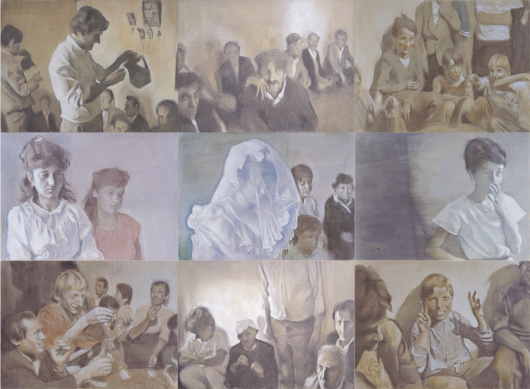
Adrian Paci, The Wedding, 2007 9 acrilico on wood panel (60 × 80 cm), Photo credit: Studio Vandrasch, Courtesy: Collezione Giuseppe Iannacone
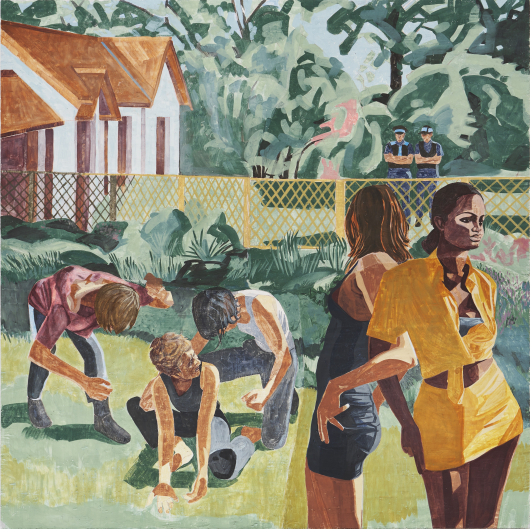
Hannah Quinlan & Rosie Hastings, Public Affairs 1, 2020, Fresco on wooden panel (200 × 200 cm) Photo credit: Studio Vandrasch, Courtesy: Collezione Giuseppe Iannacone
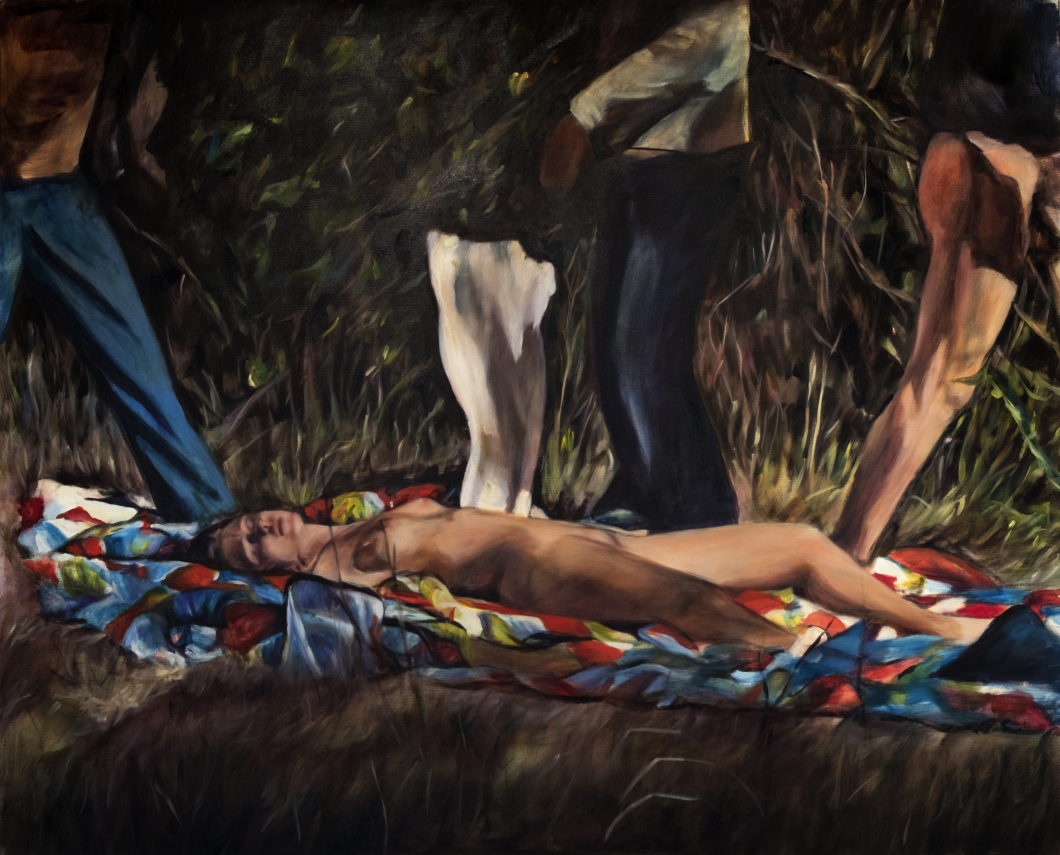
va Lulashi Ma come disarmarti, anima cara 2023 Oil on Canvas (152 × 188 cm), Photo credit: Studio Vandrasch, Courtesy: Collezione Giuseppe Iannacone
In the exhibition “ L'estetica della deformazione. Protagonisti dell’espressionismo italiano” part of your collection of Italian art from the 1930s and 1940s is on display. How did this part of your collection come about? Which artists?
I began collecting in the 1990s, a period that I experienced with a lot of tension from a professional point of view and that I was able to overcome just thanks to art. I studied a lot and a deep admiration was born for those Italian artists of the 1930s who were not influenced by the cultural dictates of Margherita Sarfatti's official art. These artists, who kept their distance from the rhetoric of the “Novecento Italiano,” looked to European art and used color and form to authentically reveal the emotions of the man of the time.
So my collection was born, to date the only private collection of Italian painting from the neo-Romantic season of the 1930s, which includes masterpieces by Scuola di via Cavour, Corrente, Chiarismo Lombardo and Sei di Torino. Among the artists included in my collection are Aligi Sassu, Arnaldo Badodi, Renato Birolli, Scipione, Mario Mafai, Antonietta Raphaël, Alberto Ziveri, Renato Guttuso, Luigi Broggini, Lucio Fontana, Giuseppe Migneco, Italo Valenti, Emilio Vedova and the Lombard Chiarists.
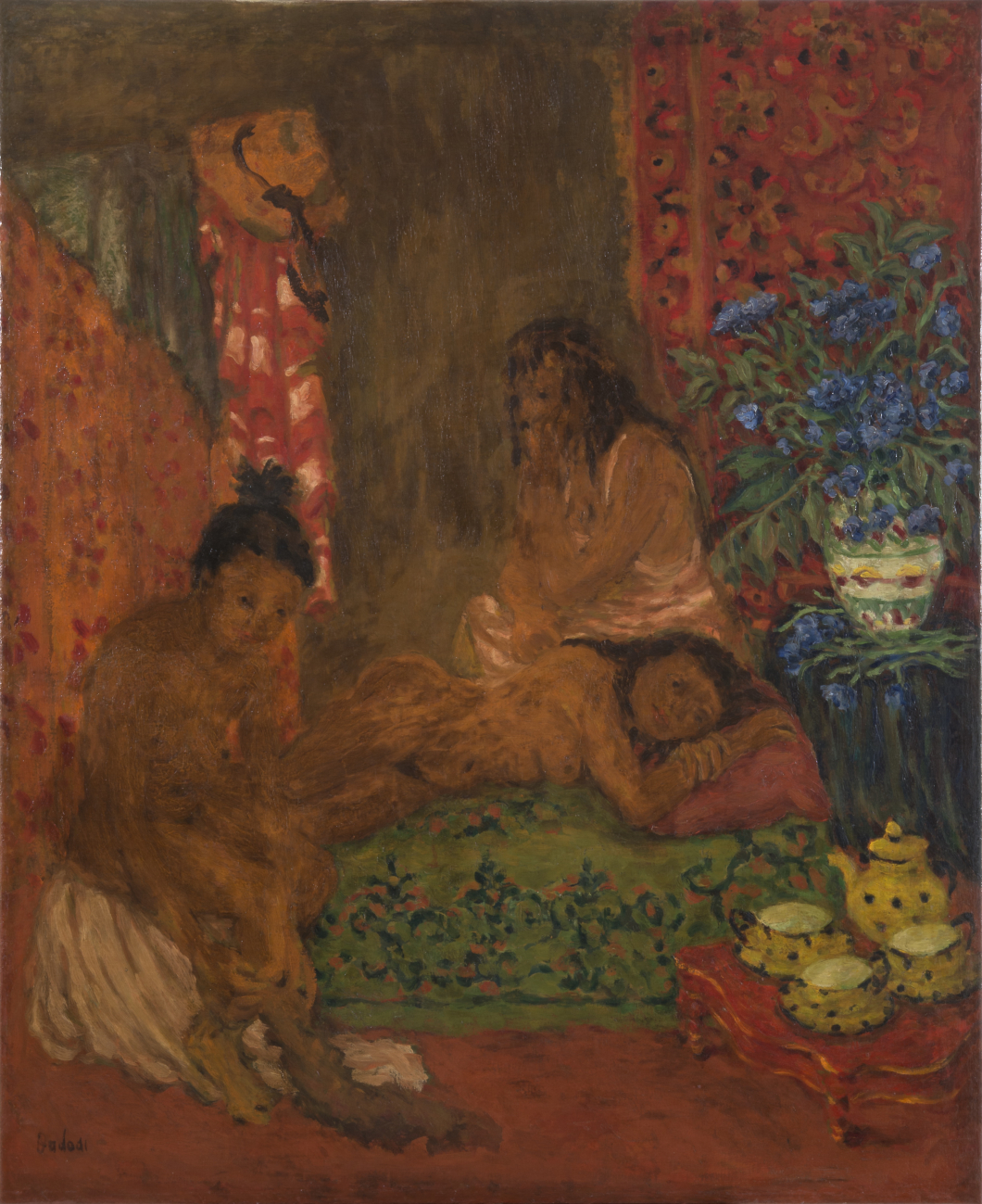
Arnaldo Badodi, Gineceo, 1940 Oil on canvas, (125 × 102 cm), Photo credit: Studio Vandrasch, Courtesy: Collezione Giuseppe Iannacone
Continuing on the topic of more historicized art many times you said that you neither collect Sironi nor Casorati. For what reason these artists are not part of the more historic part of your collection?
I think that basically the collector is looking for something in art that is missing in his life, and I firmly believe that he should follow his own inclinations. It should not tell the history of art, but his personal story. I look for the truth of the human soul, whether it is beautiful or ugly. In the case of the 1930s collection, there is a personal element that represents me and an element of historical objective reconstruction. I have great admiration for Sironi, Casorati, Morandi, and the artists of the Novecento Italiano and Realismo Magico. However, there is a difference between loving art history and loving an artist and then deciding to buy him or her. I buy only what represents me, and Sironi does not represent me. What he was dealing with did not correspond to what was happening in the country. The story I wanted and want to tell was different. For me, art is freedom, and the artists I now collect imposed no restrictions on themselves: it is in their works that I find a reflection of the feelings of a country in turmoil.
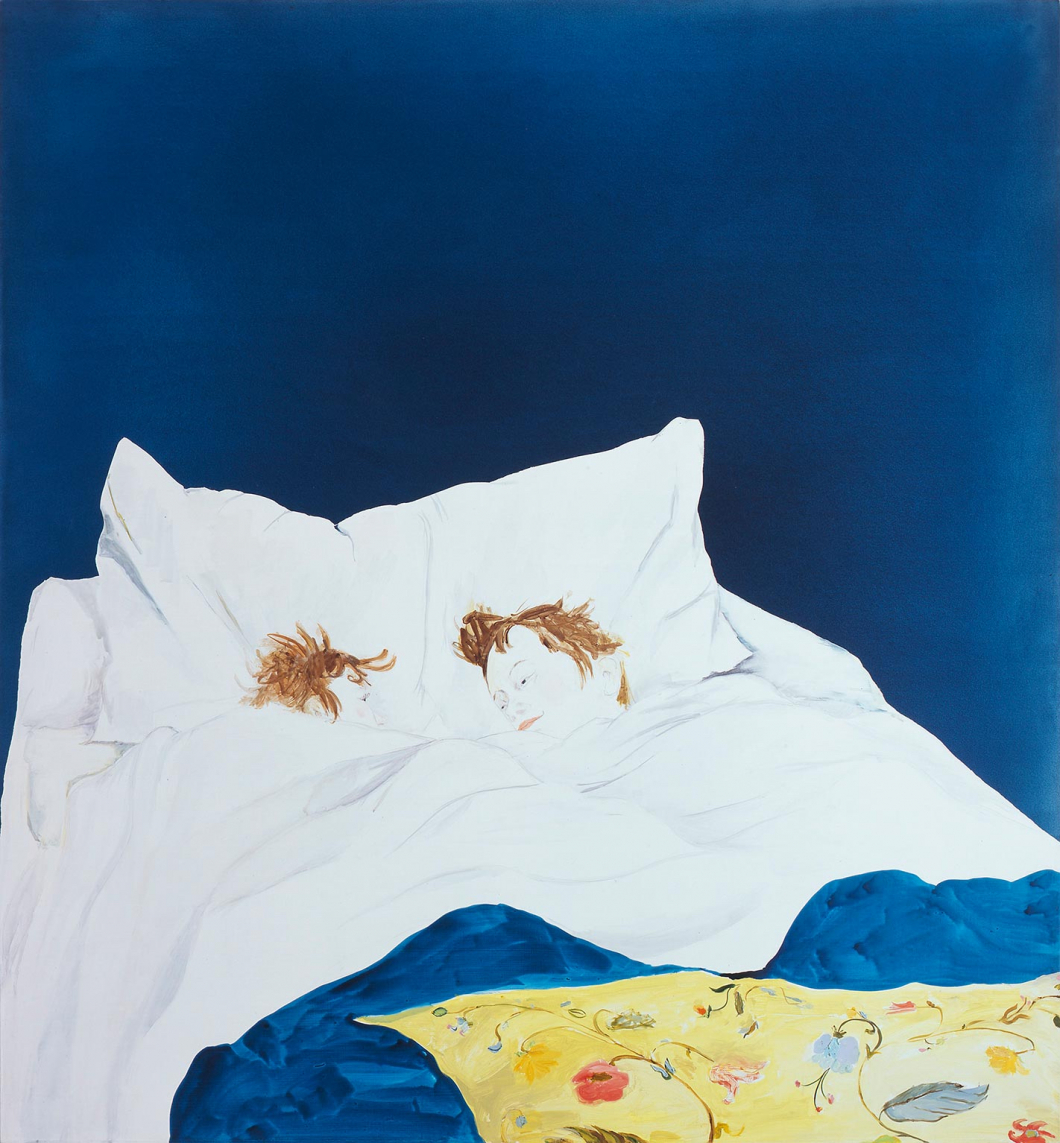
Laura Owens, Untitled, 2000, acrylic, oil and watercolor on canvas, (183 × 167.8 cm) Photo credit: Studio Vandrasch, Courtesy: Collezione Giuseppe Iannacone
And concerning ultra-contemporary art, how do you judge the explosion that has driven up the auction prices of young artists, especially American artists, dramatically?
I think there are many variables involved. Unfortunately, there are those who profit from this phenomenon, exploiting the hype of the moment. Some artists reach exorbitant figures not so much because of the intrinsic value of their works, but because of their ability, or intention, to follow current trends. I am noticing a growing problem of hit-and-run collecting, where collectors simply follow the hype of the moment. This type of collecting is often fueled by galleries profiting from these trends, selling works at inflated prices by artists, often, without a curriculum. A genuine collector must be able to distinguish between fashion and real value, defending himself or herself against these blunders through a thorough of study of art history and a sincere passion that goes beyond mere financial investment.
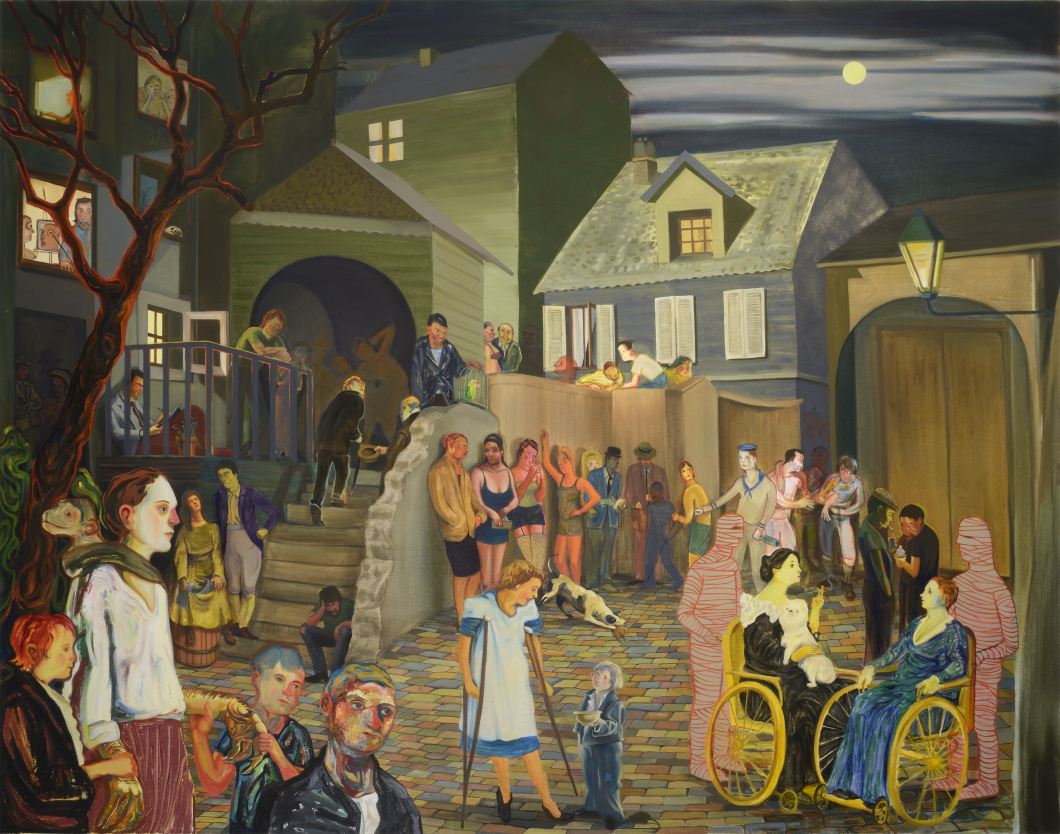
Nicole Eisenman, Beasley Street, 2007, oil on canvas, (165.5 × 208.5 cm), Photo credit: Studio Vandrasch, Courtesy: Collezione Giuseppe Iannacone
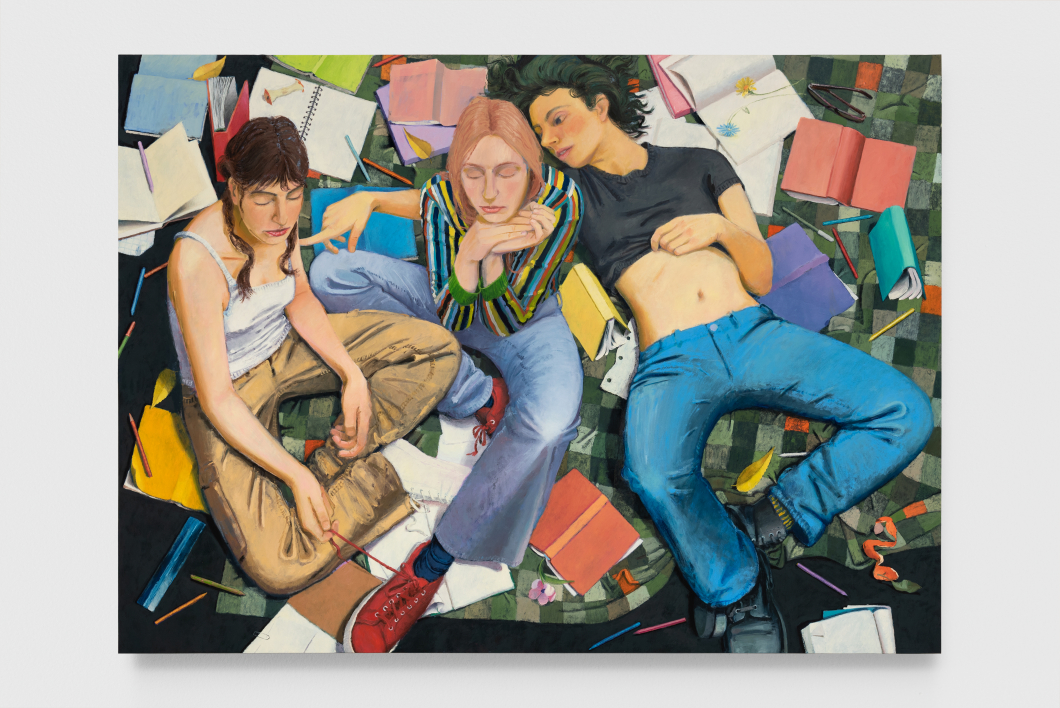
Emilio Gola, Sinonimi e contrari, 2023, Oil and acrylic on canvas, (134.5 × 185 cm) Photo credit: Michela Pedranti, Courtesy: Collezione Giuseppe Iannacone
Besides Italian expressionism, your collection focuses on contemporary and ultra-contemporary art defined as young artists at the beginning of their careers. Natural transition to experience the art of the present time?
Although the two sections of my collection belong to different historical periods, I see it as a unicum, as a set of stories that explore the depth and complexity of the human soul over time, reflecting hopes, concerns, joys and everyday life. Whether it is the art of the 1930s or contemporary art I am always looking for a more poetic expression of inner life. With young artists, in particular, I share emotions that I experience daily, and my goal is to find the works of those who can express today's reality in a poetic and novel way; I believe that without this investigation of the present, my collection would not be complete.
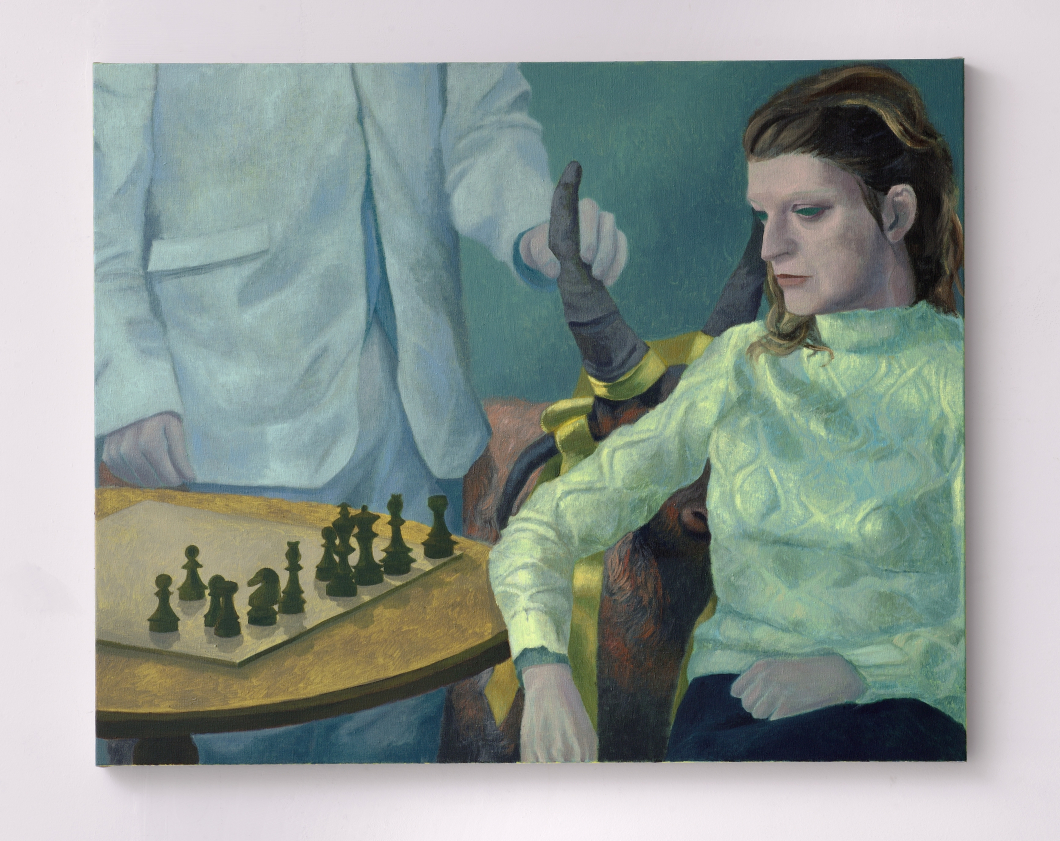
Alessandro Fogo, Chess game versus Matthew Barney, 2022 Olio su lino (77 × 95 cm) Photo credit: Studio Vandrasch, Courtesy: Collezione Giuseppe Iannacone
And concerning ultra-contemporary art, how do you see the explosion that has driven up the auction prices of young artists, especially American artists, dramatically?
I think there are many variables involved. Unfortunately, there are those who profit from this phenomenon, exploiting the hype of the moment. Some artists reach exorbitant figures not so much because of the intrinsic value of their works, but because of their ability, or intention, to follow current trends. I am noticing a growing problem of hit-and-run collecting, where collectors simply follow the hype of the moment. This type of collecting is often fueled by galleries profiting from these trends, selling works at inflated prices by artists, often, without a curriculum. A genuine collector must be able to distinguish between fashion and real value, defending himself or herself against these blunders through a thorough of study of art history and a sincere passion that goes beyond mere financial investment.
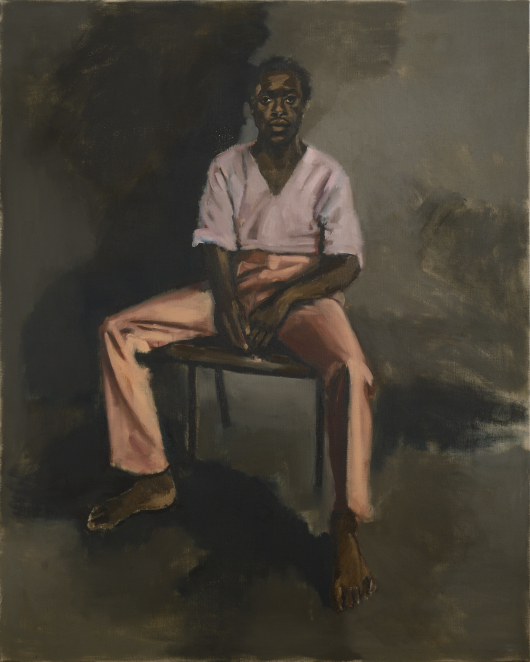
Lynette Yiadom-Boakye, The August 2015, oil on Canvas ( 200 × 160 × 3.7 cm) Photo credit: Studio Vandrasch, Courtesy Fondazione Giuseppe Iannacone
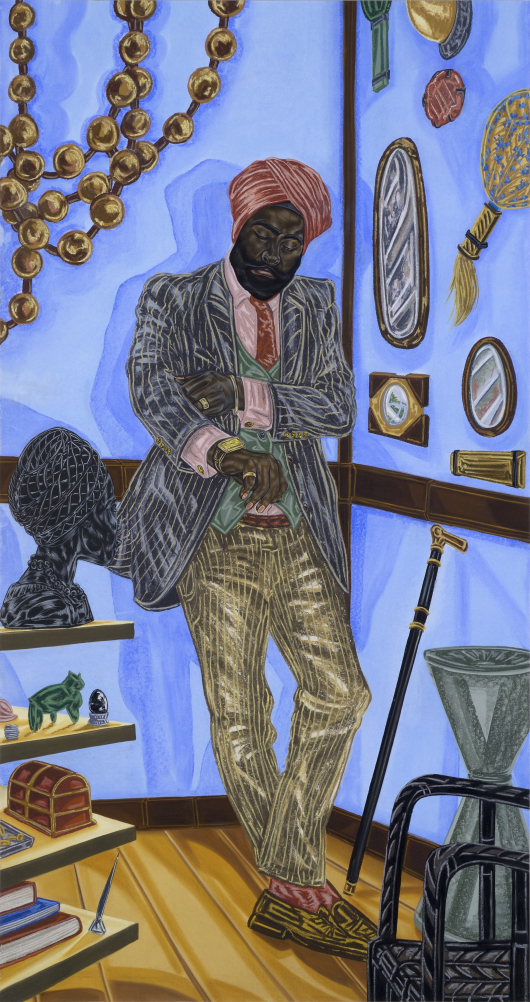
Toyin Ojih Odutola, At His Wife's Oûce 2017-18, charcoal, pastel and pencil on paper (220.98 × 106.68 cm), Photo credit: Studio Vandrasch, Courtesy Fondazione Giuseppe Iannacon
You have always said that you would rather have a masterpiece by a lesser-known artist than a lesser work by a master. For what reason?
I believe that the quality and meaning of a work is much more important than its historical recognition or the artist's name. I would rather have a masterpiece by a lesser-known artist than a “minor” work by a Master, because I believe that a significant work can have a deeper and more lasting impact. This philosophy guides both historical and contemporary art sections of my collection. A work that conveys a strong poetic resonance and an authentic view of the human soul is invaluable to me. It is not just a matter of accumulating well-known names, but enriching my collection with pieces that contribute meaningfully to art history and reflect a genuine artistic expression. This search for meaning and authenticity drives me to discover and value works that, although they may not be widely recognized, offer a deep emotional and intellectual connection.
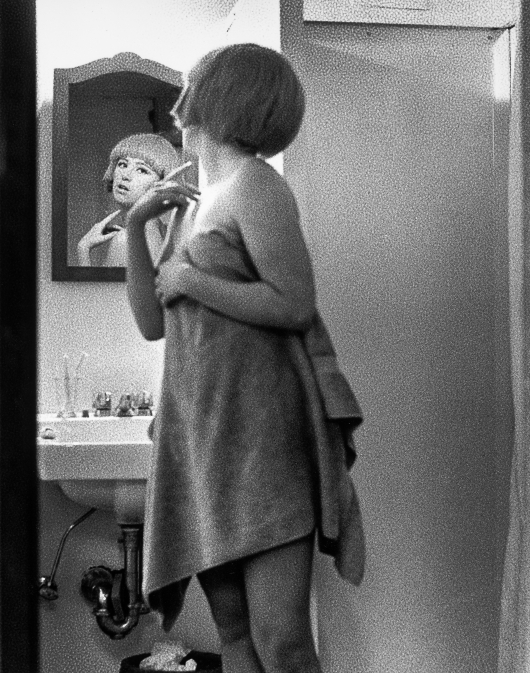
Cindy Sherman, Untitled Film Still #2, 197, Silver gelatin print, Photo credit: Studio Vandrasch, Courtesy: Collezione Giuseppe Iannacone
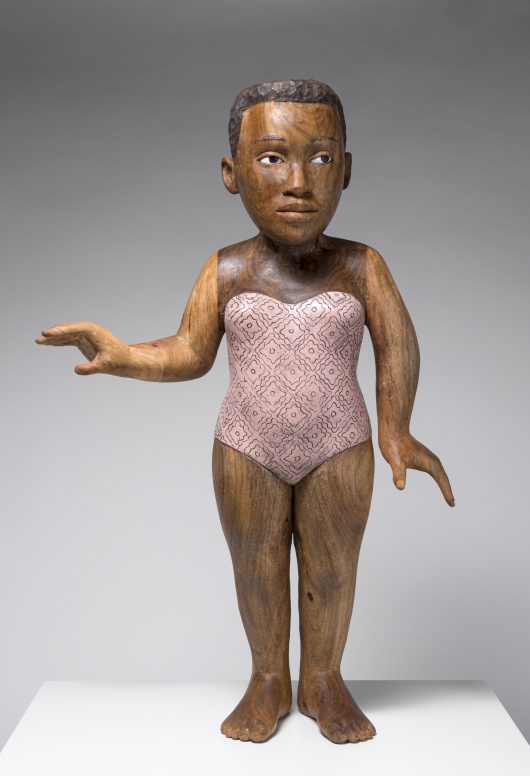
Claudette Schreuders, New Favourite, 2020, Legno di canfora, (altezza: 67 cm) Photo credit: Studio Vandrasch, Courtesy: Collezione Giuseppe Iannacone
What does 'art is a safe haven asset' mean to you?
To me, collectors who see art as a safe haven asset cannot be called collectors. They are not genuine collectors and I recognize them immediately because at dinner they talk about what they bought, its worth and its potential value again. Those who sincerely collect and do not see art as a mere investment, collect only for the love of art.
What is the most important issue for a collector to follow when he or she wants to start or expand a collection?
I think the most important issue to follow is, with no doubt, knowledge and study of art history. This is the base on which a solid and meaningful collection is built. A deep knowledge of art history allows one to understand the artistic currents, cultural movements, and historical influences that have shaped the works and artists. Without this understanding, it is difficult to fully appreciate the value of a work of art and make an informed choice. Studying leads you to recognize the importance of works in their context and to identify what makes them truly unique and significant. In addition, I believe that a well-informed collector is less susceptible to passing fads and market speculation. This is especially important in a time when, as I have already pointed out, some works may be overvalued due to media attention or market pressure. I conclude by saying that knowledge of art history also helps to discover what really resonates with the collector. Each collection is a reflection of his or her personality and passions; therefore, it is important that choices are guided by a genuine emotional connection to the works.
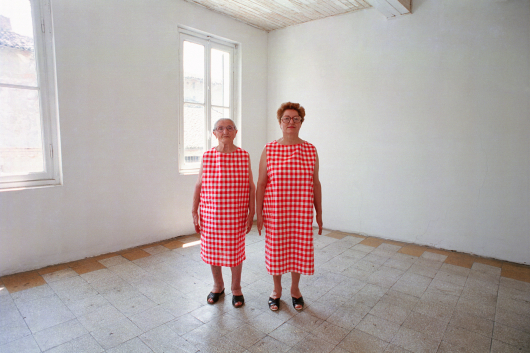
Marcello Maloberti, La vertigine della signora Emilia 1992-2019, inkjet print on Barytata Canson paper (30 × 45 cm) , Photo credit: Studio Vandrasch, Courtesy: Collezione Giuseppe Iannacone

Paola Pivi, Senza titolo (Asino), 2003, photographic print mounted on DIBOND plate (180 × 224 cm) Edizione 1/7, Photo credit: Studio Vandrasch, Courtesy: Collezione Giuseppe Iannacone
Whom do you not trust within the art system?
Experience has shown me the importance of working exclusively with gallerists, curators, and art professionals who occupy a well-defined and transparent position in the industry. Conversely, you should be cautious with those professionals, such as curators or consultants, who do not disclose their ties to the market and who, despite conflicts of interest, try to persuade you to rely completely on their advice and guidance.
The inherent dangers of collecting?
The risk their collection, often put together after years of passion and dedication, may be distorted and divided after their death. This is a great challenge, since an art collection is not just a collection of works, but a unicum of carefully chosen works that reflect the collector's vision, taste, and sensibility. When a collection is dispersed, the collector's original intent is also lost, and works, once part of a harmonious dialogue, end up being sold separately, often in contexts that do not respect their common history. I believe it is crucial that collectors carefully plan for the future of their artworks to ensure that their vision and legacy live on, offering future generations the opportunity to appreciate and understand the depth and complexity of the art they have collected.
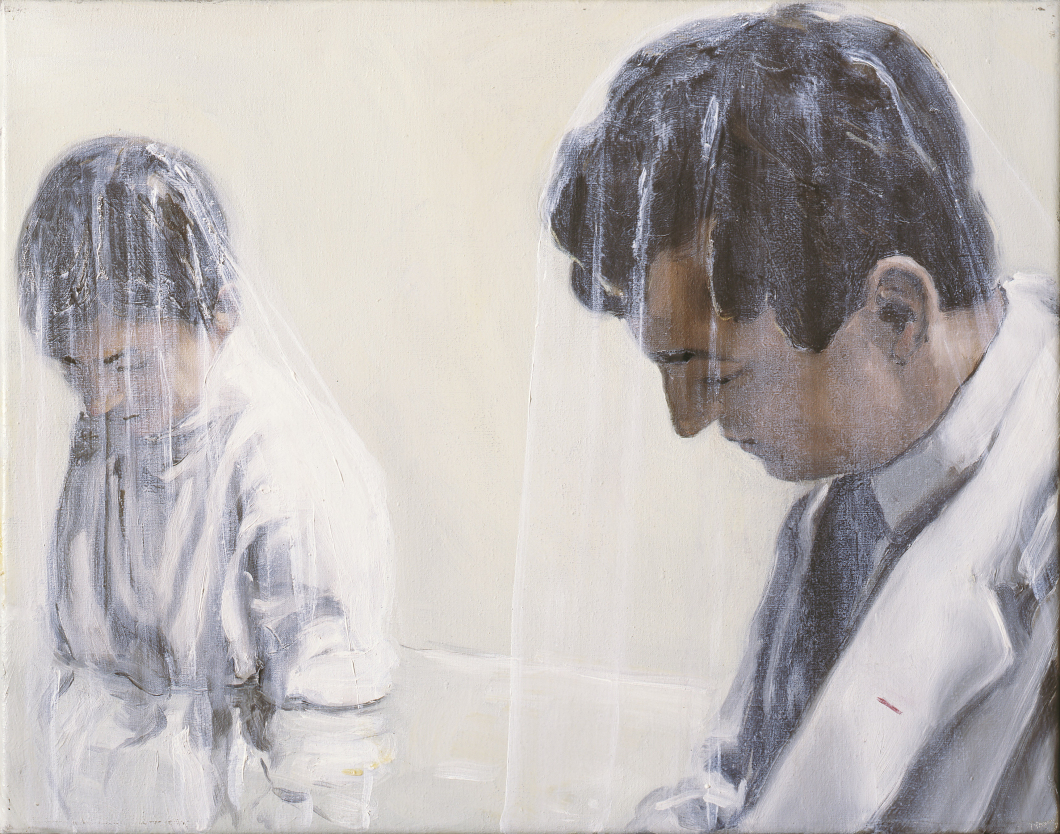
Michaël Borremans, The Veils, 2001, Oil in canvas (34.9 × 45.1 cm), Photo credit: Studio Vandrasch, Courtesy: Collezione Giuseppe Iannacone
Voci di moltitudini is an exhibition designed and implemented by your foundation at RSA Vittoria, a senior residence, in Brescia to advance a cultural battle against gender-based violence. What was the reaction of guests and visitors to seeing the works of artists Zehra Doğan, Shadi Ghadirian, Terence Koh, Iva Lulashi, and Zanele Muholi?
The exhibition, I have to say, had a very profound impact on both guests and visitors. Many did not expect that an RSA would devote attention to a topic like gender-based violence. This surprise turned into reflection when the residents had the opportunity to learn about the stories represented by the works on display and thus were able to reflect on facts that, although distant, deeply touched their emotions. I have always been convinced that art has extraordinary therapeutic power, and I was very happy to know that the exhibition generated positive and intense emotions in the residents. This feedback encourages us to continue to extend our advocacy work to other clinical and social areas as well. The goal is to continue to use art as a tool for healing and reflection, offering more people the opportunity to confront crucial issues and find solace and inspiration through the art experience.
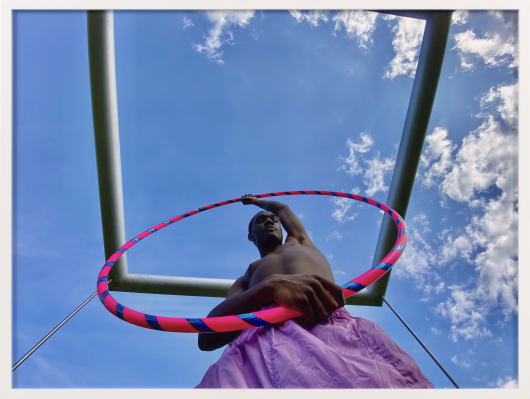
Zanele Muholi, Nomonde Mbusi 2007 Silver gelatin print, (60 × 86 cm) ed. 2/8, Photo credit: Studio Vandrasch, Courtesy: Collezione Giuseppe Iannacone
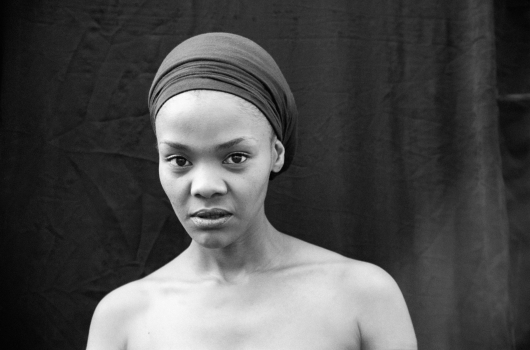
Tyler Mitchell, Untitled (Structure) 2019, Pigment print (86 × 115 cm) Ed. 1/3 + 2 AP, Photo credit: Studio Vandrasch, Courtesy: Collezione Giuseppe Iannacone
Tell us about the future development of the Foundation? In what ways do you achieve the pursuit of social purposes in art?
First of all, I am very excited to be able to announce that soon my contemporary art collection will be exhibited in a prime location. As a foundation we will continue our pursuit with even more than in the past, and we have a busy program of projects that share a social focus. We have in the pipeline exhibitions, conferences, social initiatives, exchanges with cultural centers and many other activities that have cultural, civic and solidarity purposes in common. The goal is to overcome the boundaries of merely cultural activities so that art becomes a tool for promoting diversity and supporting the most fragile categories. Indeed, while the focus of my research remains on the poetic and emotional aspects of art, I have recently recognized the social relevance of my collection, which includes many works that deal with global social issues, reflecting the complex and often contradictory nature of human existence. Indeed, I believe that artists have a unique ability to open dialogues about fundamental rights and social justice, using their mediums to raise awareness and inspire collective action.Through the Foundation I intend to harness this to support social causes, ensuring that the collection not only reflects the human experience but also contributes to positive change. Finally, I would like art to be, as it once was for me, a “crutch for the soul” for the weak, a tool to help them regain lost balances.
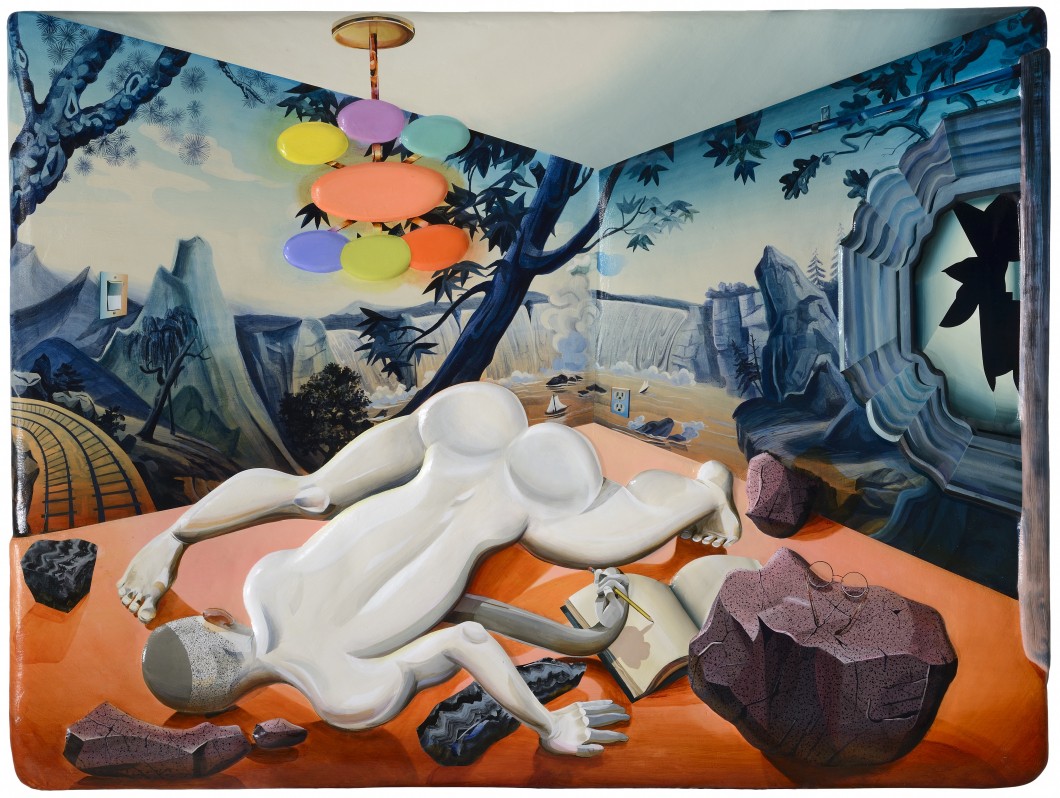
Kyle Dunn, Stone Tea Room, 2019, epoxy resin panel, gypsum and foam (122 × 162.5 × 5 cm), Photo credit: Studio Vandrasch, Courtesy: Collezione Giuseppe Iannacone
The missed purchase: for what reason?
I often think of the works I wanted but failed to acquire for various reasons. Especially in my early years as a collector, once I identified a masterpiece, I would spend hours trying to convince collectors to sell it or involve gallerists in the search for the work and its owner(s). The efforts were not always successful. I would have likeRisveglio della bionda Sirena di Scipione but I could not afford it at the time. I would have loved a Manzù sculpture as well, but even today it is difficult to find one of the proper quality and price.
Five works that are on your wish list and for what reason?
My intention is to continue the search for meaningful works that reflect my own personal sensibility, whether they are from the 1930s or established contemporary artists. I am also particularly interested in discovering and supporting talented young artists, both Italian and foreign, whose work, in addition to being in tune with my own inclinations, promises to offer new perspectives and reflections on the contemporary world.